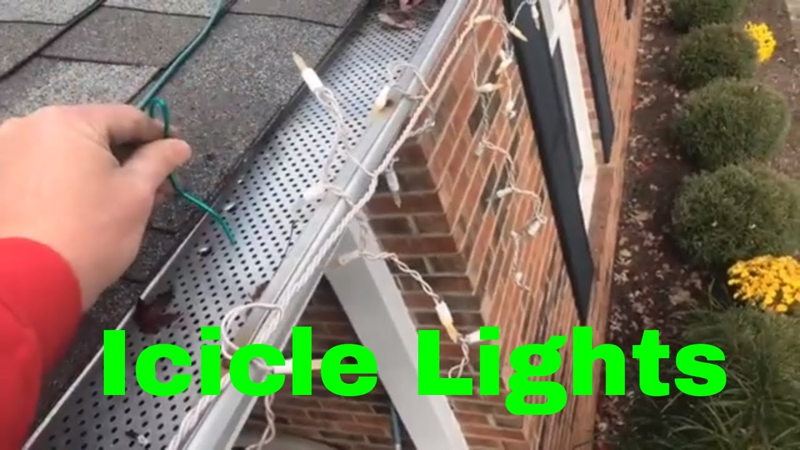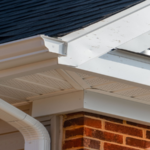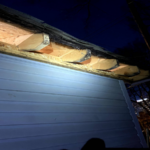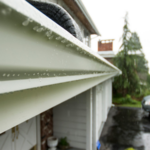When it comes to gutter installation, there are a few things you need to keep in mind to make sure you get the job done right. First, you need to choose the right type of gutters for your home. There are many different types and styles of gutters available on the market, so it is important to do your research and select the one that will best suit your needs.
Once you have selected the right type of gutter, you need to take accurate measurements of your home’s eaves in order to determine the correct length of gutters you will need. This is a critical step, as too short or too long gutters can cause a variety of problems. Once you have the correct measurements, you can then begin the process of installing your gutters.
The actual installation process is relatively straightforward, but there are a few things you need to keep in mind. First, you need to make sure that the gutters are properly secured to your home. This is typically done with brackets or hangers that are screwed into the fascia board. It is important to make sure that the brackets or hangers are properly installed, as this will help to ensure that the gutters do not come loose over time.
What are some common mistakes that people make when installing gutters?
- Not cleaning the gutters before installation – This is one of the most important steps and yet is often overlooked. If there is any debris in the gutters, it will cause problems with the installation and can even lead to leaks.
- Not measuring the gutters properly – Measuring the gutters is crucial in order to get the correct size. If the gutters are too small, they won’t be able to handle the amount of water coming down from the roof. If they’re too big, they’ll be too heavy and could pull away from the roof.
- Not installing the gutters at the correct angle – The gutters should be installed at a slight angle so that the water can flow down into the downspouts. If they’re installed too flat, the water will just sit in the gutters and eventually overflow.
- Not securing the gutters properly – The gutters need to be securely fastened to the house so that they can support the weight of the water. If they’re not installed correctly, they could pull away from the house or even collapse.
- Not installing the downspouts properly – The downspouts need to be installed so that they direct the water away from the foundation of the house. If they’re not installed correctly, the water could seep into the foundation and cause damage.
What is the rule of thumb for gutter installation?
There is no definitive answer to this question as it depends on a number of factors, such as the size and type of your home, the amount of rainfall in your area, and your personal preferences. However, a general rule of thumb is to install gutters that are at least 4 inches wide.
Should gutters be flush with fascia?
Most people believe that gutters should be flush with the fascia, or the board that runs along the edge of the roof. The reason for this is that when it rains, the water will run down the fascia and into the gutters, and then out the downspout. If the gutters are not flush with the fascia, the water can run behind the gutters and cause rot and damage to the fascia board and the roof.
How do you know if your gutters are bad?
- Look for signs of water damage on the exterior of your home. This can include staining on the siding or trim, peeling paint, or mold growth.
- Inspect your gutters for signs of wear and tear. This can include cracks, holes, or separation at the seams.
- Check for clogs in your gutters by flushing them with water from a hose. Clogs can cause water to back up and overflow, leading to damage.
- Have a professional inspect your gutters to assess their condition and recommend repairs or replacement as needed.
How do you check for roof gutter leaks?
The first thing you need to do is check the seams where the gutter meets the roof. Look for any cracks or holes in the gutter. If you find any, seal them with a waterproof sealant.
Next, check the downspouts. Make sure they are clear of debris and are draining properly. If they are clogged, they will cause water to back up in the gutters and cause leaks.
Finally, check the gutters themselves for any leaks. If you find any, repair them with a gutter sealant.
Should gutters blend in or stand out?
There are a few schools of thought on this one – and it ultimately comes down to personal preference. Some people believe that gutters should be a subtle part of the home, and therefore should blend in with the rest of the house. Others believe that gutters are an important part of the home’s exterior and should therefore be a focal point. There are pros and cons to both approaches.
If you want your gutters to blend in, you’ll want to choose a color that closely matches the trim on your home. This will make the gutters less noticeable and give your home a more streamlined look. The downside is that if your gutters are the same color as the trim, they may be more difficult to see when they need to be cleaned.
If you want your gutters to stand out, you can choose a color that complements the rest of your home’s exterior. This will make the gutters more visible and can give your home a more unique look. The downside to this approach is that your gutters may be more susceptible to dirt and debris, as they will be more visible.
Should there be a gap between roof and gutter?
There are a few reasons for this. The first is that it allows for any water that does get under the shingles to drain away instead of sitting there and causing rot or mold. Second, it provides an additional layer of protection against wind-driven rain and snow. And third, it helps to keep debris from building up and clogging the gutters.
How much standing water is OK in a gutter?
- Too much standing water in a gutter can cause overflow and leaks, so it’s important to clean them out regularly.
- You can remove the water by scooping it out with a cup or a small container.
- If the water is too deep to scoop out, you can use a wet/dry vacuum to remove it.
- Once the water is removed, make sure to clean the gutters with a garden hose to remove any debris.
Bottom Line
When it comes to gutter installation, its important to make sure youre doing it right. Investigate the essential details of gutter installation to ensure a quality job. With proper installation, your gutters will provide years of protection for your home.















